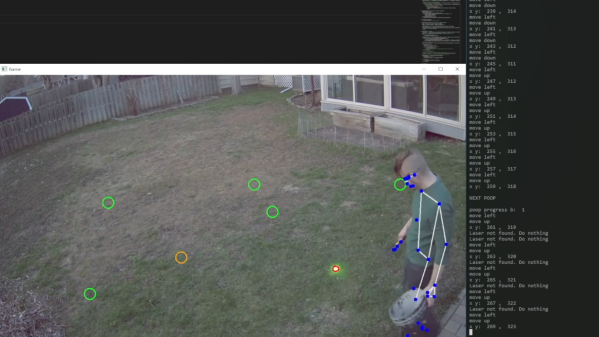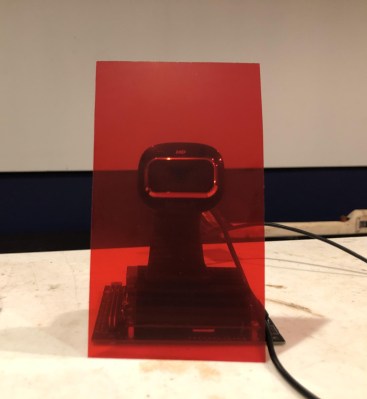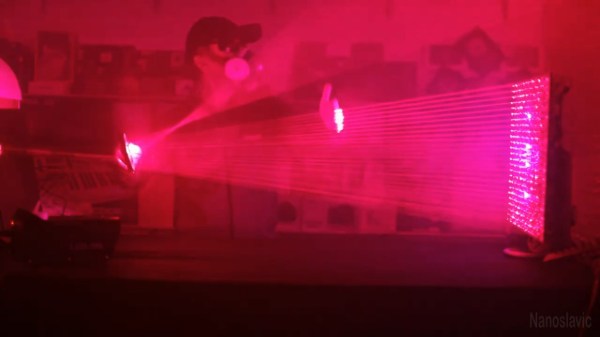When you’re lucky enough to have a dog in your life, you tend to overlook some of the more one-sided aspects of the relationship. While you are severely restrained with regard to where you eliminate your waste, your furry friend is free to roam the yard and dispense his or her nuggets pretty much at will, and fully expect you to follow along on cleanup duty. See what we did there?
And so dog people sometimes rebel at this lopsided power structure, by leaving the cleanup till later — often much, much later, when locating the offending piles can be a bit difficult. So naturally, we now have this poop-shooting laser turret to helpfully guide you through your backyard cleanup sessions. It comes to us from [Caleb Olson], who leveraged his recent poop-posture monitor as the source of data for where exactly in the yard each deposit is located. To point them out, he attached a laser pointer to a cheap robot arm, and used OpenCV to help line up the bright green spot on each poop.
But wait, there’s more. [Caleb]’s code also optimizes his poop patrol route, minimizing the amount of pesky walking he has to do to visit each pile. And, the same pose estimation algorithm that watches the adorable [Twinkie] make her deposits keeps track of which ones [Caleb] stoops by, removing each from the worklist in turn. So now instead of having a dog control his life, he’s got a dog and a computer running the show. Perfect.
We joke, because poop, but really, this is a pretty neat exercise in machine learning. It does seem like the robot arm was bit overkill, though — we’d have thought a simple two-servo turret would have been pretty easy to whip up.
Continue reading “Point Out Pup’s Packages With This Poop-Shooting Laser”



 To give the game a bit more of a physical feel, [piles.of.spam] made an actual crossbow for the player to wield. Its handle was cut from a scrap piece of wood, using a band saw for the general shape and a CNC machine for the delicate cut-outs that hold a laser pointer, an ESP32 and a microswitch-based trigger. The laser shines onto the game screen, while the ESP32 sends out a data packet over WiFi when the trigger is pulled.
To give the game a bit more of a physical feel, [piles.of.spam] made an actual crossbow for the player to wield. Its handle was cut from a scrap piece of wood, using a band saw for the general shape and a CNC machine for the delicate cut-outs that hold a laser pointer, an ESP32 and a microswitch-based trigger. The laser shines onto the game screen, while the ESP32 sends out a data packet over WiFi when the trigger is pulled. The computing hardware consists of a pair of Jetson Nano boards, which sport quad-core ARM A57 CPUs as well as powerful graphics hardware to generate the game’s visuals. The end result is impressive, especially given the fact that all of this was designed and built in just three weeks. It was apparently a great hit with its intended audience, as visitors queued to try their hand at shooting the hungry zombies.
The computing hardware consists of a pair of Jetson Nano boards, which sport quad-core ARM A57 CPUs as well as powerful graphics hardware to generate the game’s visuals. The end result is impressive, especially given the fact that all of this was designed and built in just three weeks. It was apparently a great hit with its intended audience, as visitors queued to try their hand at shooting the hungry zombies.















